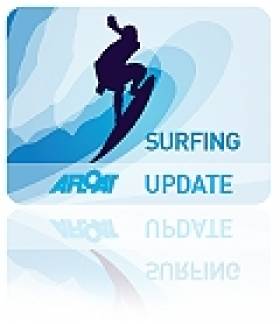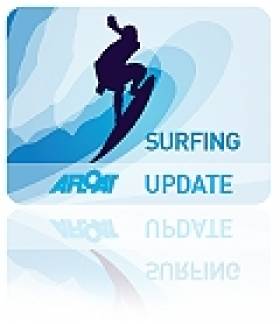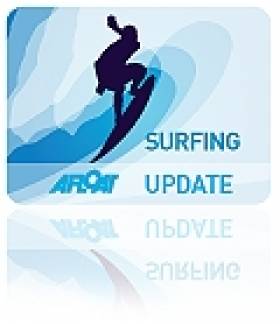Displaying items by tag: StandUp Paddle Boarding
#StandUpPaddle - Jason Conniry is set to make it a first for Cork's An Rás Mór during the Ocean to City Cork Harbour Festival this coming June bank holiday weekend - plying the long-distance rowing course by stand-up paddle board.
As the Irish Examiner reports, the former US lifeguard and longtime surfer, who now resides in Clonakilty, will attempt the shorter 13km race route on his 14ft paddle board just months after surgery for cancer.
He'll be the only 'stand-up guy' among hundreds of rowing boats, kayaks, canoes and even dragon boat teams in the annual race that stretched from Monkstown to the heart of the city in its full 28km length.
“If this goes well, next year I would love to open the race up to prone paddle boarders and we could see up to 100 entries," he said.
The Irish Examiner has more on the story HERE – and also carries news of an incredible encounter with a killer whale by a stand-up paddle boarder in New Zealand this week.
Like Reilly was lucky enough to have his GoPro to hand when the inquisitive orca swam right up to his board for a nose around.
"This one bee-lined it for me," he said of the cetacean in the video above. "He popped up about 10cm away from the back of my board. I was a bit nervous thinking, 'what's this guy going to do?'"
Now It's Wave Rage With Tirade Over Surf Rights in Cornwall
#surfing – 'F*** off back to England you ****!' A surfer who allegedly rode another surfers wave has been racially abused on a Cornish beach by a stand-up paddle boarder (SUP) who appears to consider Cornwall another country.
Longboarder Phil Brown, 29, was subjected to abuse after 'sharing' a wave. The former Army serviceman described it as 'disgusting' and 'inappropriate'.
The Unknown paddle boarder launched into a four-letter tirade at Bude, Cornwall. He told the surfer: 'I will put you in f*****g hospital' if he rode same wave again.
Galway Windsurfers Set Paddle Board Record
#Surfing - A trio of Galway windsurfers completed the 95km round trip to and from the Aran Islands last weekend - setting a new Irish record for stand-up paddle boarding in the process.
The Irish Times reports on the successful adventure by Dan Gardner, Daniel King and Joe Gallagher, who embarked on the challenge to raise funds for the Galway RNLI lifeboat service.
Setting out before 5.30am on the morning of Saturday 8 June, they returned to the Galway Docks before 11pm that night - stopping at the halfway mark for lunch on Inis Mór.
The trio are each believed to have covered some 4,000 strokes an hour to make their record time of 17 hours 33 minutes. The Irish Times has more on the story HERE.
In other surfing news, the Sunday Independent reports on a website that's seeking to connect surfers of all levels with the right waves for them.
Waterford-based Liam Sinnott set up Swellseekers.ie with business partner James Hassey two years ago, filling a gap in the market for booking surfing trips online at a time when Ireland was only just emerging as a world-class surfing destination.
Though the site currently only takes bookings for surfing and other watersports in the Waterford area, Sinnott says he hopes to expand his site's scope nationwide by next year to serve a growing wave-riding community of "50,000 surfing all year round".































































